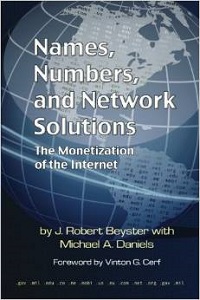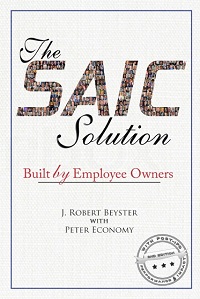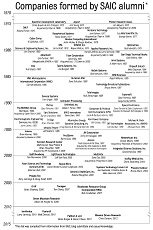Week twenty-one: Competitiveness
5 Comments Published by Dr. Beyster September 21st, 2006 in Competitiveness.Staying on the topic of competitiveness for the moment, I read the article that Kenny Pegram so kindly linked to earlier this week. While I hate to differ with David Brooks of the New York Times, it remains to be seen if U.S. competitiveness today is adequate. It appears to me that things aren’t peaches and cream in Afghanistan and Iraq, and we aren’t being listened to by many of the members of the United Nations. In fact, an alliance of nations led by the Presidents of Iran and Venezuela seem to be gunning for us. On top of that, signs don’t look good here either. The Big Three automakers have not succeeded in solving their financial problems and are resorting to major surgery. Let’s hope it works this time. So we’ll have our hands full for the next few years. These problems are major for the country and they go far beyond the ability of employee ownership to have much of an impact on them.
Click on the comments link to share your thoughts.
- Bob
Here are my responses to previous weeks’ comments:
Michael Spaeth (Week 20): I’ll look forward to finding the site. I promise you I’ll read it and include Pro2Serve in the family tree.
William Weeks (Week 20): Thank you for your response. I hope these emerging countries will assume more of the burden of financing U.N. peacekeeping forces in far-off places and also world health, education, and environmental initiatives. It’s getting to be a little much for the U.S. taxpayers as you know.





Bob:
I think the US has a significant problem in declining enrollment and graduation rates in math, science and engineering per the ” Good to Great” article and other estimates. Graduation rates have declined 50 percent between 1970 and 2000. This will impact our competitiveness. I think dedicated organizations like the Foundation for Enterprise Development (FED) can help and I have begun to investigate ways to do that. The investigation begins with a gap analysis to see what is being done at the federal, state and local levels to address this issue and then identifies the problem areas where help is needed.
The analytical framework begins with producing more and better qualified students at the elementary and high school levels and then continuing into college. This involves standards and testing via the standard achievement tests for secondary schools. Then, the qualified students must be motivated to study these areas. Motivation is a challenge but activities that can help include mentoring (by individuals, corporations, and universities), creating S&T scholarships, generating greater awareness of S&T job opportunities and linking S&T curriculum to vertical market application area pathways. In this later case, I think greater motivation results from seeing how the S&T courses can be applied in areas such as energy, environment, transportation, manufacturing, information technology and other verticals. The applications not the courses are what creats excitement. These are areas where we might help. I have begun drawing on information from various sources ranging from local schools and agencies to the Senate staff. One area where help is needed is the handicapped-they have reported test scores of one-half to one-third the success rates of others in the some areas. This needs further definition.
I would like to know if others who are interested in this S&T problem would like to contribute? I will keep you posted with my findings and progress.
Regards
Jim
Dr. Beyster,
Can America compete in a global world? How do we want to measure our success or failure at competition? I’m going to ramble a bit, because this issue touches lots of key concerns. Thanks for raising the competitiveness issue on your blog. Jim Russell offers some superb data. I have spent the last 2.5 years trying to figure out how regions and institutions compete on a global scale when all trade is global, all markets are theoretically accessible (except for North Korea, which remains essentially the only autarky – completely isolated economy- on the planet), and all people have the right and capacity to move across nations and hemispheres to at least some extent. This is most definitely not the world I grew up in, where at least half the nations were off limits to the western world, 3/4′s of the nations had no reason to trade with the other 1/4, and barriers of language and political systems prevented most of the globe from regular interaction of people, ideas, goods, and services. Every day I am confronted with the challenge of helping a major public research university compete for the resources needed to perform its education, research, and community/global outreach missions – all of which are equally imperative to prepare students who will become the next generation of the world’s political, business, and community leaders (since universities train both American and many foreign national students, now more difficult with visa restrictions). No state legislature funding public universities today can produce the financial support that a major public university needs. Private funding and federal government funding of public universities represent typically 75-90% of the annual operating and research budget of most major public universities today, regardless of whether states have a personal income tax or not (my state does not). Just as corporations are competing for market share, customer loyalty, S&T breakthrough research, and the best people, they are turning to universities to give them the edge in research, positions in new global markets (partnering with non-American universities), and graduates who understand the languages and cultures of the places these businesses will be building their operations. But rarely do the corporations understand the fragility of their source of supply to be globally competitive (the people with research and global expertise). Governments understand it less. Jim offers important data about readiness of kids for college, but I look at other data – ability of universities to deliver students into the employment pool who are prepared to work in companies, non-profits, and government agencies that have a global mission. The FED and some other smart people could take a really long look at how enterprises compete in the global space, and instead of looking at the head-to-head competition that happens in a given market sector, take a look at the “supply chain” that companies rely on to build and sustain their competitive edge. My own thinking now is that American companies that figure out how to create and sustain a global supply chain – for hiring, for securing R&D (from internal or external sources), for efficient operations and delivery of service/product, for partnering with universities, other companies and with governments – are the companies who will compete and succeed, regardless of their market sector or location of headquarters. American companies can still lead by example, but they can’t win and everyone else lose. Indeed, it’s in their best interests if the companies that are their partners win too.
Jim, I’m very interested in what you’re up to as I am in the process of creating a major effort to build private funding from institutions and individuals to endow graduate and postdoctoral fellowships in math and the hard sciences. Stable, predictable financial support is needed so top students can be recruited and retained regardless of financial circumstances and don’t have to worry about cancellation of federal research grants in the middle of their graduate studies (these grants are the principal source of funding that make it possible for grad students to attend public research universities).
Regards,
Gael Tarleton
Dr Beyster,
I agree with Jim and Gael about the need to improve the way we motivate young people to pursue careers in science and technology. Jim touched on the need to develop more and better qualified students at elementary and high school levels. I think this is true and we need to find away to get parents more excited and involved in their children’s education. Parental involvement is a tough nut to crack, but I think we will crack it. One possible program I can think of takes advantage our high school facilities to offer evening courses to disadvantaged parents. Volunteers could teach these courses. Today, we have adult reading programs taught by volunteers. These would be essentiallythe same thing on a larger scale.
A couple of years back I asked a clinical physiologist how a person makes real change in their life. His response was it’s impossible. You should give up before you start. After awhile he said that there was one way – PAIN. You need to experience so much PAIN that it is unbearable to continue along you current path. I can confirm that PAIN works. I think the American auto industry will be successful, but they will experience a lot of PAIN before the needed change occurs. I think Detroit needs to do a better job of understanding what their customer wants in a car. This is where most of the pain will be felt. They are making progress fixing some of the industry’s structural problems and I think this will continue to improve.
I sense violent agreement on the critical need to take our nation and potentially the world in new direction based on science innovation. The time is right to launch an Innovation Renaissance to tackle the most significant challenges of our time. The US must lead this renaissance but that will require a profound change in thinking from our political leadeship and our society overall. How do we get this Renaissance launched?
Sergio: You know, I have a feeling that I’m in violent agreement with you about the need for a renaissance in this country. We need to tackle the challenges the country faces more effectively than we have in the recent past. The place to launch this renaissance is with government policy, and the government needs to be sympathetic to such changes. — Bob